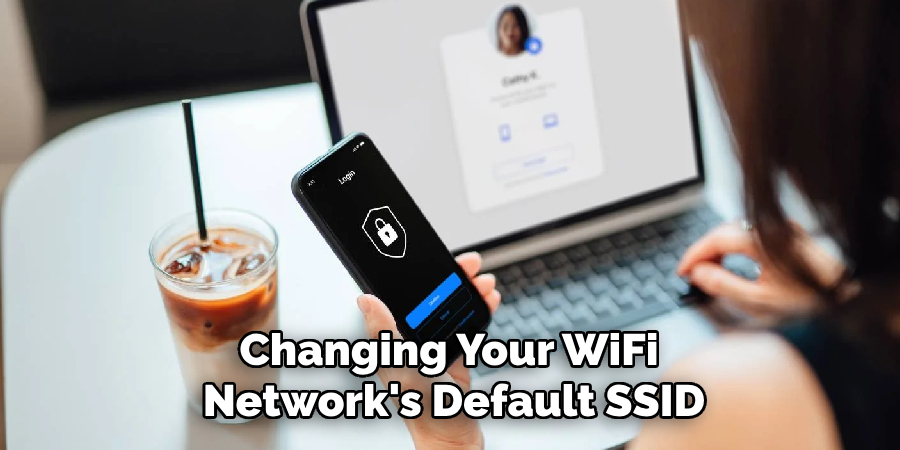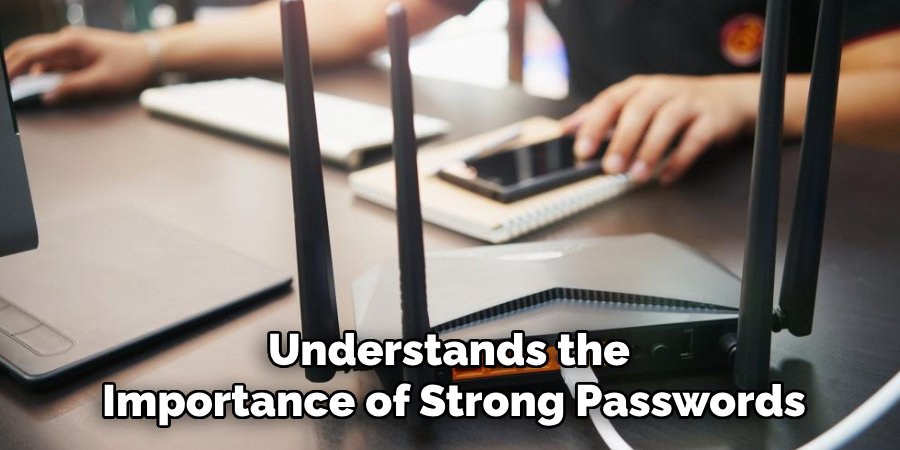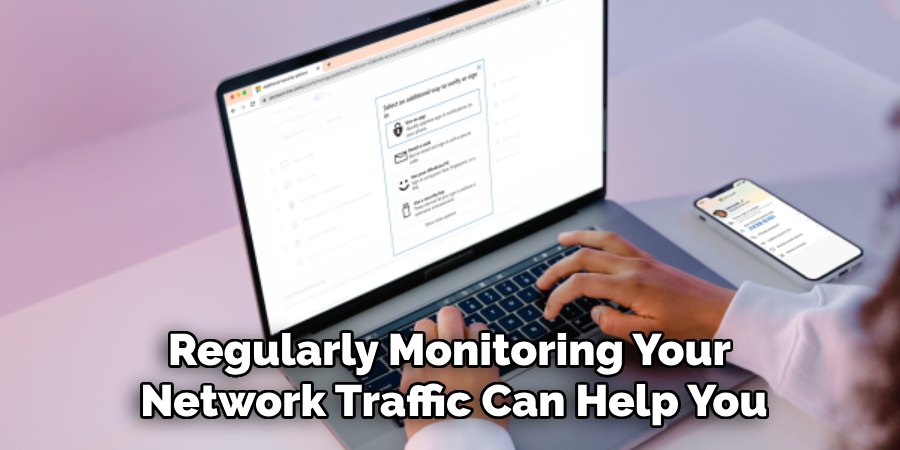Are you looking for ways to prevent WiFi jamming? In this guide, you will learn about the different methods and techniques on how to prevent WiFi jamming. As wireless networks become more prevalent in our daily lives, it is crucial to take steps to ensure their security and stability.
In an age where connectivity is crucial for both personal and professional tasks, the disruption of WiFi signals can pose a significant inconvenience. Whether intentional or accidental, WiFi jamming can interrupt internet access, decrease productivity, and even compromise security measures. Preventing WiFi jamming has become essential to maintain a stable and reliable wireless connection.

This guide aims to provide actionable strategies and techniques to help you safeguard your WiFi network from interference, ensuring seamless and uninterrupted connectivity for all your devices.
What Will You Need?
Before delving into the various methods for preventing WiFi jamming, you must know what tools and resources you will need. These can include:
- A Wi-Fi router or Access Point: This device connects your network to the internet and broadcasts wireless signals.
- A Strong and Unique Wi-Fi Password: A secure password for your Wi-Fi network is the first line of defense against potential jammers.
- Network Monitoring Software: This can help identify any unusual activity on your network, such as sudden drops in signal strength or an influx of new devices.
- Access Control Lists: ACLs allow you to restrict access to your network by specific devices or users.
With these tools in hand, let’s explore different ways to prevent WiFi jamming.
10 Easy Steps on How to Prevent Wifi Jamming
Step 1. Change the Default SSID and Password
Changing your WiFi network’s default SSID (Service Set Identifier) and password is one of the first steps in preventing WiFi jamming. The default settings are often well-known and can easily be exploited by potential jammers. Creating a unique SSID and a strong, complex password adds an additional layer of security to your network. This makes it more challenging for external parties to identify and target your network for jamming. Be sure to use a mix of letters, numbers, and special characters in your password to enhance its strength.

Step 2. Enable Network Encryption
Enabling network encryption is another crucial step in securing your WiFi network against jamming. Use robust encryption standards, such as WPA3 (WiFi Protected Access 3), to protect the data transmitted over your network. Encryption ensures that even if a jammer intercepts your wireless signals, they won’t be able to decipher the data being exchanged. WPA3 offers enhanced security features compared to its predecessors, making it a better option for keeping your network safe. Make sure to enable encryption settings in your router’s configuration menu to bolster your network’s defenses.
Step 3. Use 5GHz Frequency Band
Switching to the 5GHz frequency band can help mitigate the risk of WiFi jamming. The 2.4GHz band is more commonly used and therefore more susceptible to interference from other devices such as microwave ovens, cordless phones, and Bluetooth gadgets. The 5GHz band, on the other hand, offers more channels and tends to be less crowded, reducing the likelihood of jamming. Most modern routers support dual-band or tri-band operation, allowing you to configure your network to operate on the 5GHz band. Check your router’s settings to enable and switch to the 5GHz frequency.
Step 4. Implement MAC Address Filtering
Another effective strategy to prevent WiFi jamming is to use MAC address filtering. Every device that connects to your WiFi network has a unique MAC (Media Access Control) address. You can restrict unauthorized devices from connecting by configuring your router to allow only specific MAC addresses to access your network. This adds an extra layer of security to your WiFi setup. To implement MAC address filtering, log into your router’s admin panel, find the MAC address filtering option, and add the MAC addresses of your trusted devices.
Step 5. Disable SSID Broadcasting
Disabling SSID broadcasting is a useful technique to make your WiFi network less conspicuous to potential jammers. When SSID broadcasting is turned on, your network name is visible to anyone within range, making it a target for interference. By disabling SSID broadcasts, you can hide your network from public view. Although this won’t make your network completely invisible, it will reduce its visibility to casual observers. Access your router’s configuration menu and turn off the broadcast option to disable SSID broadcasting.

Step 6. Keep Firmware Updated
Keeping your router’s firmware updated is crucial for maintaining security against WiFi jamming. Manufacturers regularly release firmware updates to patch vulnerabilities and enhance performance. Outdated firmware can leave your network susceptible to various threats, including jamming. Regularly check your router manufacturer’s website or the router’s admin panel for firmware updates and apply them as needed. Updated firmware can provide new features and improved security protocols to protect your network from interference.
Step 7. Position Your Router Strategically
The physical placement of your router can also help prevent WiFi jamming. Position your router in a central location within your home or office to ensure even signal distribution. Avoid placing it near walls, metal objects, or other electronic devices that might cause interference. Elevating the router and keeping it in an open space can help it broadcast signals clearly and reduce the chances of jammers affecting your network. Additionally, placing it away from windows can minimize the likelihood of external jamming attempts.
Step 8. Utilize Anti-Jamming Technology
Investing in routers with built-in anti-jamming technology can be an effective method to prevent WiFi interference. These advanced routers are designed to detect jamming signals and automatically switch channels or frequencies to minimize disruption. Some models also have features like signal shaping and adaptive frequency hopping to further enhance their resilience against jamming. This added technology layer can significantly improve your network’s reliability and security, ensuring uninterrupted connectivity.
Step 9. Monitor Network Traffic
Regularly monitoring your network traffic can help you identify unusual patterns indicating a jamming attempt. Use network monitoring tools to keep tabs on your WiFi activity, looking for signs such as sudden drops in signal strength, unexpected device connections, or abnormal data traffic. Being proactive and vigilant can help you catch potential interference early and take appropriate measures to counteract it. Logging activities and setting up alerts for suspicious behavior can also aid in maintaining a secure network.
Step 10. Educate Users
Educating users about best practices for WiFi security is a crucial step in preventing jamming. Ensure that everyone using your network understands the importance of strong passwords, encryption, and other security measures. Encourage users to report any connectivity issues or strange behaviors promptly. By fostering a culture of awareness and proactive security, you can collectively contribute to maintaining a robust defense against WiFi jamming. Knowledgeable users are less likely to fall victim to attacks and can help mitigate the potential impact of jamming activities.

Following these steps can strengthen your WiFi network’s resilience against jamming and ensure uninterrupted connectivity for all your devices.
5 Things You Should Avoid
- Using Outdated Equipment: Old routers and networking hardware may not have modern security features, making them more susceptible to interference from jammers. Always use up-to-date equipment to ensure better protection.
- Ignoring Firmware Updates: Router manufacturers regularly release firmware updates that can improve security and performance. Ignoring these updates can leave you vulnerable to new and evolving jamming techniques.
- Placing Routers in Poor Locations: Positioning your router near thick walls, electronic devices, or other potential sources of interference can degrade your Wi-Fi signal, making it easier for jammers to disrupt your connection. Ensure your router is placed in an optimal location.
- Using Default Network Settings: Default settings are often well-known and can be easily exploited by those looking to jam or interfere with your connection. To improve security, customize your network settings, including passwords and SSID.
- Neglecting Network Monitoring: Failing to monitor your network regularly for unusual activity can allow jammers to go undetected for longer periods. Use network monitoring tools to monitor traffic and spot potential issues early.
By avoiding these common mistakes, you can significantly reduce the risk of falling victim to wifi jamming.
What are the Signs of Wi-Fi Jamming?
Wi-Fi jamming can be difficult to detect, as it often appears as a simple loss of connection or slow internet speeds. However, there are some tell-tale signs that may indicate your network is being jammed:
- Intermittent or sudden drops in internet connection.
- Difficulty connecting to the network or staying connected.
- Slow internet speeds despite a strong signal.
- Inability to access certain websites or online services.
- Unusual device behavior, such as devices randomly disconnecting from the network.

If you experience any of these signs, it’s important to investigate further and take steps to secure your network against possible jamming. Regularly monitoring your network and staying alert for any suspicious activity can help you detect and prevent potential wifi jamming attacks.
Conclusion
How to prevent WiFi jamming is a multifaceted approach that combines modern technology, vigilant monitoring, and proactive measures.
Ensuring that your network equipment is always up to date and placed in optimal locations can significantly enhance your protection against jammers. Customizing your network settings and regularly updating firmware are essential steps to fortify your defenses. Additionally, consistent network monitoring is crucial for detecting and addressing potential jamming attempts early.
By staying informed and taking these preventative actions, you can maintain a secure and reliable Wi-Fi connection, safeguarding your digital experiences from interference.

